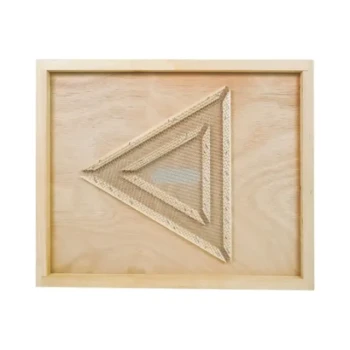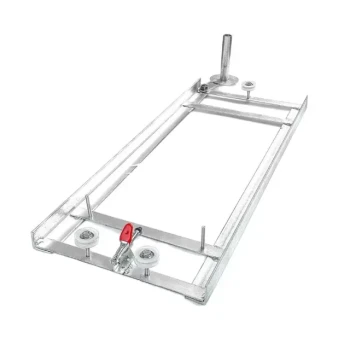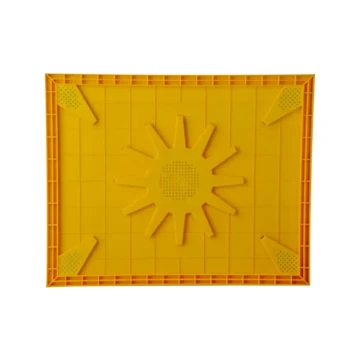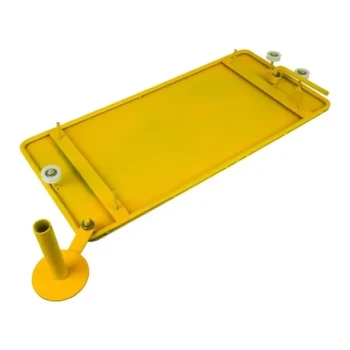At its core, the practice of switching between screened and solid bottom boards is a strategic response to seasonal changes. Beekeepers use screened bottoms primarily during the warm summer months for superior ventilation and pest management, then switch to solid bottoms in the fall and winter to provide crucial insulation and protect the colony from cold drafts.
The choice isn't about which bottom board is universally "better," but about which tool best serves the colony's needs at a specific time of year. Switching allows a beekeeper to optimize for ventilation and pest control in the summer, and then for insulation and warmth in the winter.
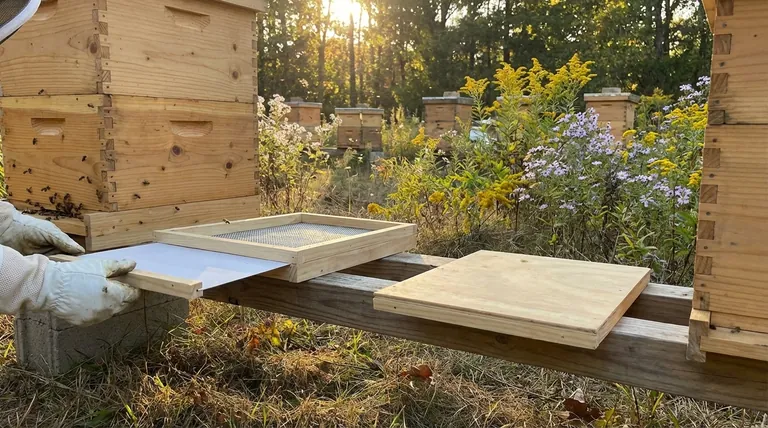
Understanding the Two Bottom Board Designs
A bottom board serves as the floor of the beehive. The choice of its design has a direct impact on the hive's internal environment, influencing temperature, humidity, and pest dynamics.
The Solid Bottom Board
This is the traditional design—a simple, solid piece of wood. It completely encloses the bottom of the hive, offering maximum protection from the elements and drafts.
The Screened Bottom Board
Also known as an Integrated Pest Management (IPM) board, this design features a durable wire screen that makes up most of the floor. It typically includes a removable solid tray or "sticky board" that can be slid in underneath the screen.
The Case for Switching: A Seasonal Strategy
Switching boards isn't about preference; it's a management technique to give the bees the best possible advantage as conditions change. Most beekeepers who switch follow a clear seasonal logic.
Why Use a Screened Board in Summer?
During hot and humid months, a screened bottom board is invaluable. It provides passive ventilation that helps the colony regulate its internal temperature.
This ventilation prevents the hive from overheating and reduces the fanning work the bees must do. It also helps them cure nectar into honey more efficiently by allowing moisture to escape.
Why Use a Solid Board in Winter?
As temperatures drop, the colony's primary challenge is staying warm. A solid bottom board provides critical insulation by preventing cold air from entering the hive from below.
This protection from drafts helps the winter cluster maintain its core temperature with less effort and lower honey consumption, increasing the colony's chances of survival.
Understanding the Trade-offs and Deeper Benefits
The decision to switch goes beyond just temperature control. It involves balancing pest management, labor, and colony health throughout the year.
The Critical Role in Varroa Mite Management
A screened bottom board is a powerful tool for controlling Varroa mites. When mites fall off a bee, they can drop through the screen and out of the hive, permanently removing them from the colony.
Furthermore, placing the removable sticky board under the screen allows a beekeeper to perform a "mite drop count." This is a non-invasive way to monitor the level of mite infestation and decide when treatment is necessary. A solid board offers neither of these advantages.
The Flexibility of the Removable Tray
Many beekeepers don't physically swap out the entire bottom board. Instead, they use a screened bottom board year-round and simply manage the removable tray.
Leaving the tray out in summer provides full ventilation. Sliding it back in for the winter effectively turns the screened board into a solid board, offering insulation. This provides the benefits of both designs with less labor.
Potential for Earlier Brood Rearing
A solid bottom board, or a screened board with the tray inserted, warms up more quickly in the spring sun. This can encourage the queen to begin laying eggs earlier, leading to a faster spring population buildup.
Making the Right Choice for Your Apiary
Ultimately, your choice depends on your climate, management style, and beekeeping goals.
- If your primary focus is aggressive Varroa mite management: A screened bottom board is an essential, non-negotiable tool for monitoring and passive control.
- If you live in a climate with extreme temperature swings: Actively managing the bottom board (either by switching or using the tray) provides the best environment for your bees year-round.
- If your primary focus is simplicity and low-cost beekeeping: You can succeed with solid bottom boards, but you must be vigilant about monitoring for mites using other methods and ensuring adequate ventilation in summer.
Tailoring your equipment to your specific environment and goals is the hallmark of a successful beekeeper.
Summary Table:
| Season | Recommended Bottom Board | Key Benefits |
|---|---|---|
| Spring/Fall | Solid (or Screened with tray in) | Faster hive warm-up, encourages brood rearing. |
| Summer | Screened (tray out) | Superior ventilation, passive Varroa mite control. |
| Winter | Solid (or Screened with tray in) | Essential insulation, protects from cold drafts. |
Ready to implement this strategic approach in your apiary?
At HONESTBEE, we supply commercial apiaries and beekeeping equipment distributors with the high-quality, durable bottom boards and other essential supplies needed to master seasonal hive management. Our wholesale-focused operations ensure you get the reliable equipment your business depends on.
Let's discuss your specific needs. Contact our team of experts today to find the perfect hive equipment solutions for your climate and beekeeping goals.
Visual Guide
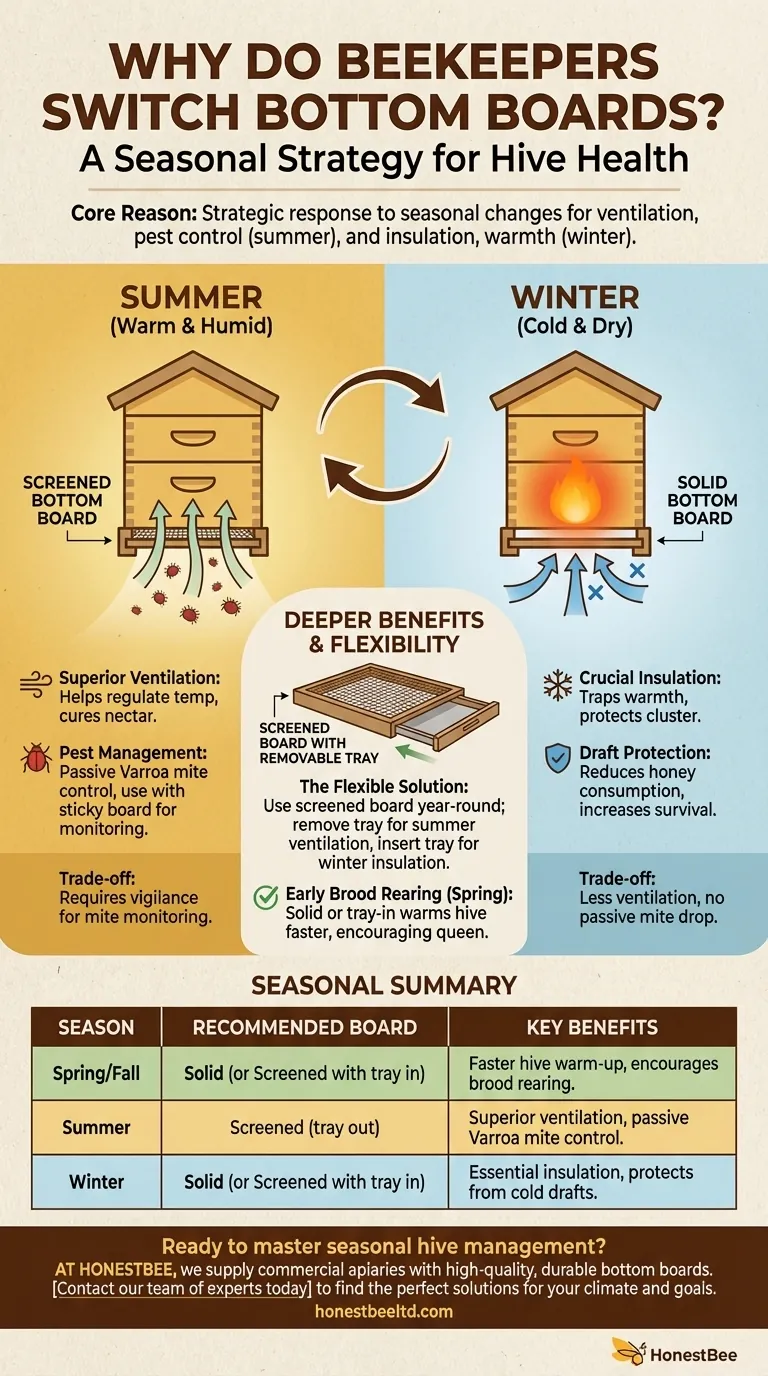
Related Products
- Australian Pine Wood Langstroth Screen Bottom Board for Wholesale
- Langstroth Screen Bottom Board for Beekeeping Wholesale
- HONESTBEE Wooden Bee Escape Board with Triangle Mesh Design for Beekeeping
- Professional Galvanized Hive Strap with Secure Locking Buckle for Beekeeping
- Boardman Entrance Bee Feeder Durable Galvanized Steel and Wood Construction for Beekeeping
People Also Ask
- Why has the Cypress Screened Bottom Board become popular in the last decade? Essential for Varroa Mite Control & Hive Health
- What features does the screened bottom board with insert offer? Essential Tools for Hive Health and Pest Control
- What are the steps to install wire mesh as a floor in a beehive? A Guide to Better Ventilation & Mite Control
- How should the screened bottom board be used throughout the year? A Guide for Healthy Hives
- How does a screened bottom board benefit the hive during the summer? Boost Ventilation & Pest Control


